Biomechanics - 7 - Angular Kinematics
1/22
There's no tags or description
Looks like no tags are added yet.
Name | Mastery | Learn | Test | Matching | Spaced |
|---|
No study sessions yet.
23 Terms
T
T/F: force is a function of mass
T
T/F: force is a function of acceleration
angular velocity
_________ is the rate of change of angular position over time
linear velocity is a function of both radius and angular velocity — and both are proportional to linear velocity
what does the equation V = r * w mean ?
angular acceleration
___________ is the rate of change of angular velocity over time
linear, angular
in many human movements, the results are _____ even though the motions of the segments are _______
SAME angular velocity
in this diagram, does S1 or S2 have a higher angular velocity?
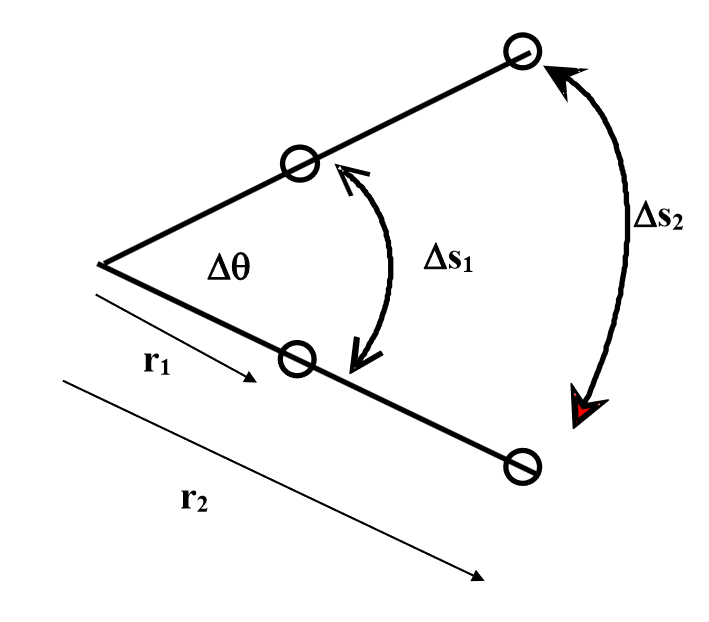
S2
in this diagram, does S1 or S2 have a higher linear velocity?
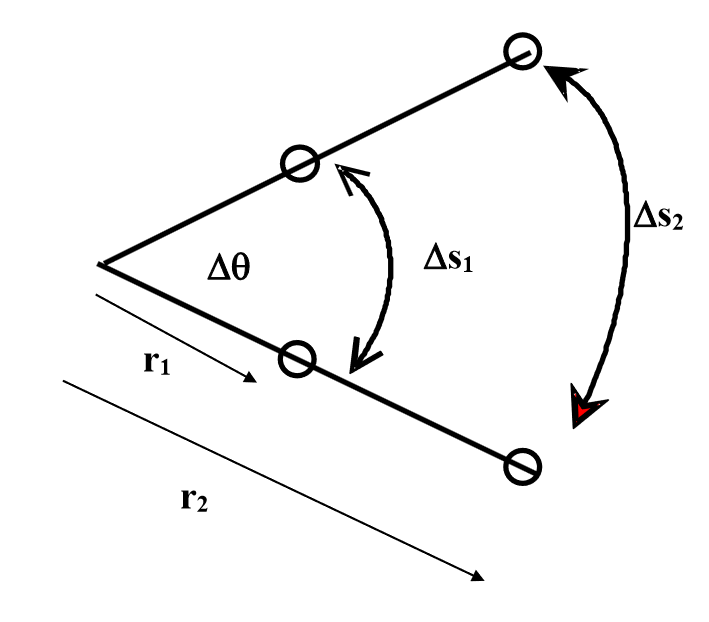
if velocity increases
if radius decreases
radial (centripetal) acceleration increases when velocity and radius do what: (2)
position
in this diagram, what is the vertical axis of the top graph?
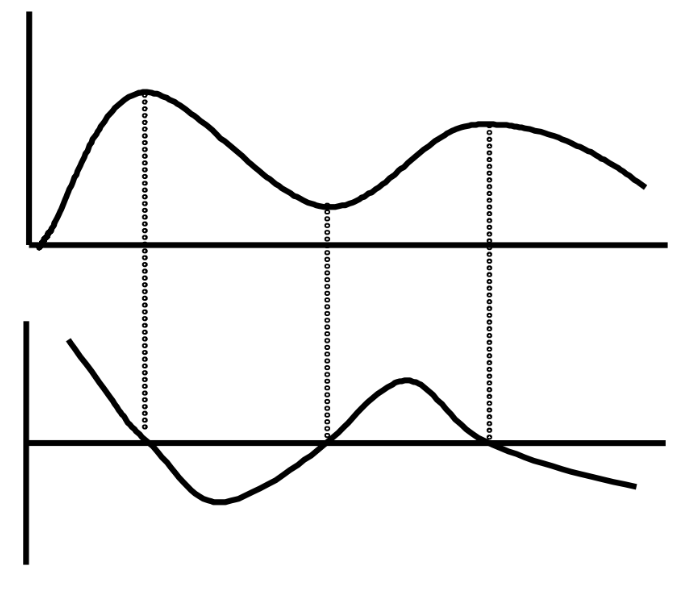
time
in this diagram, what is the horizontal axis of both graphs?
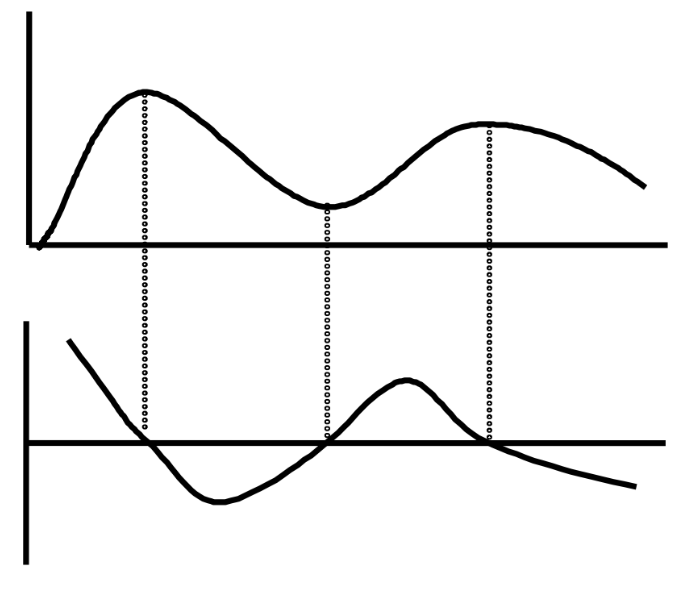
velocity
in this diagram, what is the vertical axis of the bottom graph?
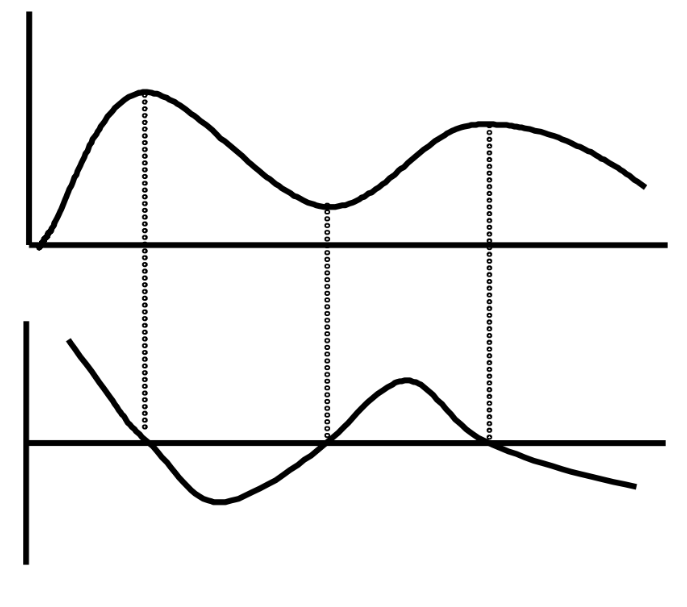
velocity
in this diagram, what does the slope of the top graph indicate?
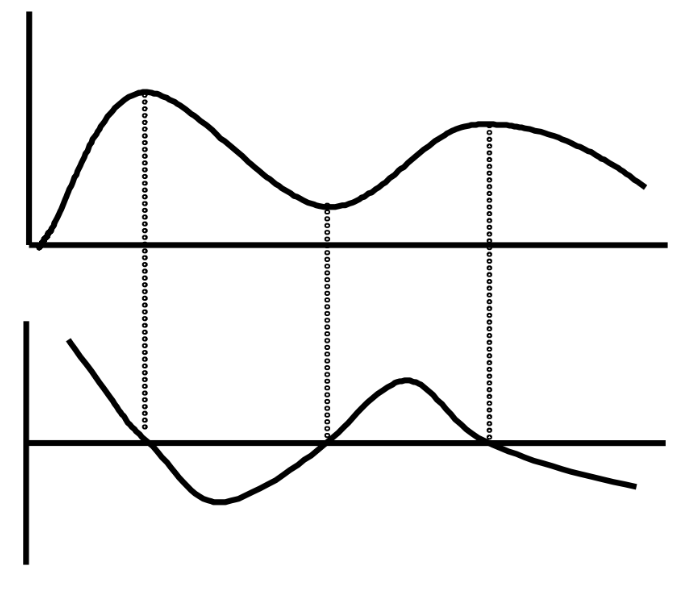
acceleration
in this diagram, what does the slope of the bottom graph indicate?
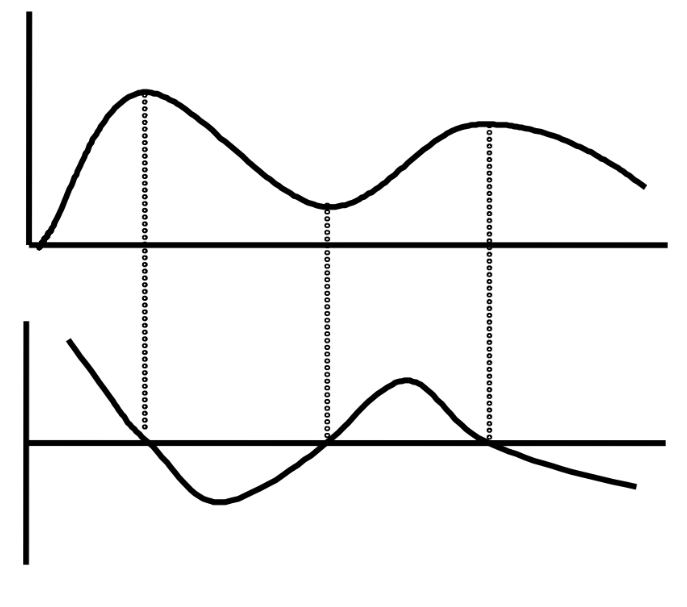
differentiation
the process indicated in the diagram of getting the bottom graph from the data of the top graph is called _________
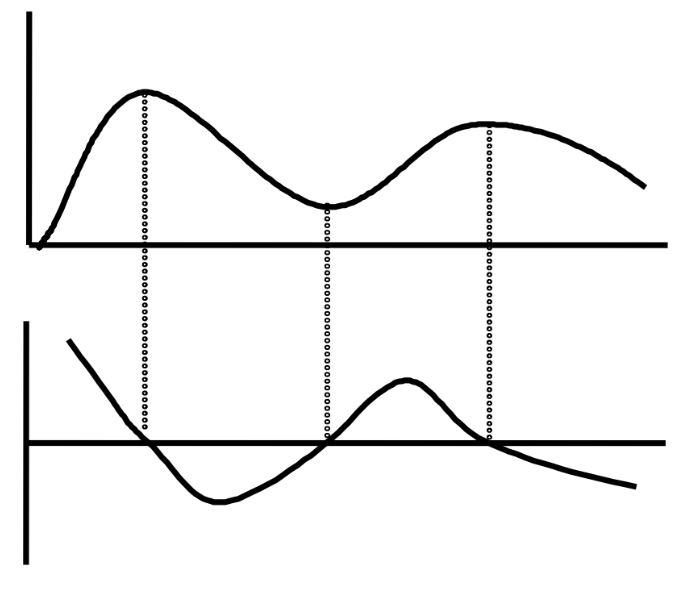
they indicate changes in direction where velocity is zero
what do the vertical dotted lines on this diagram indicate?
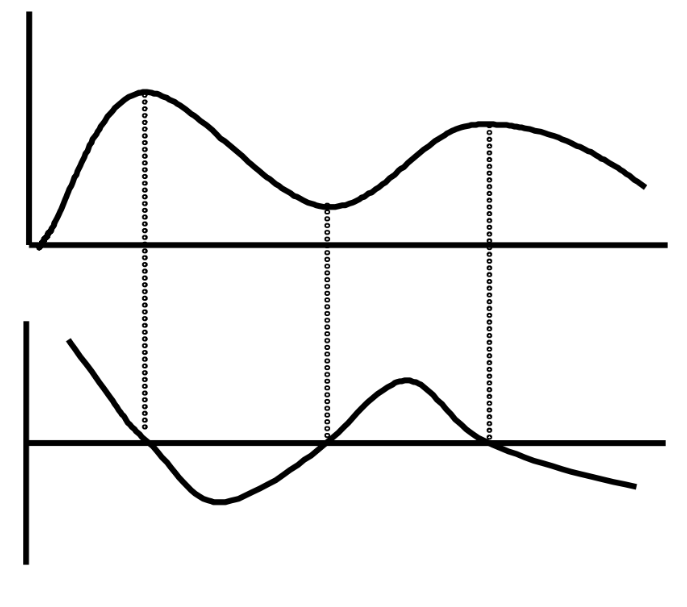
“forwards” / towards the finish line / positive velocity
in the top graph, positive slopes indicate moving __________
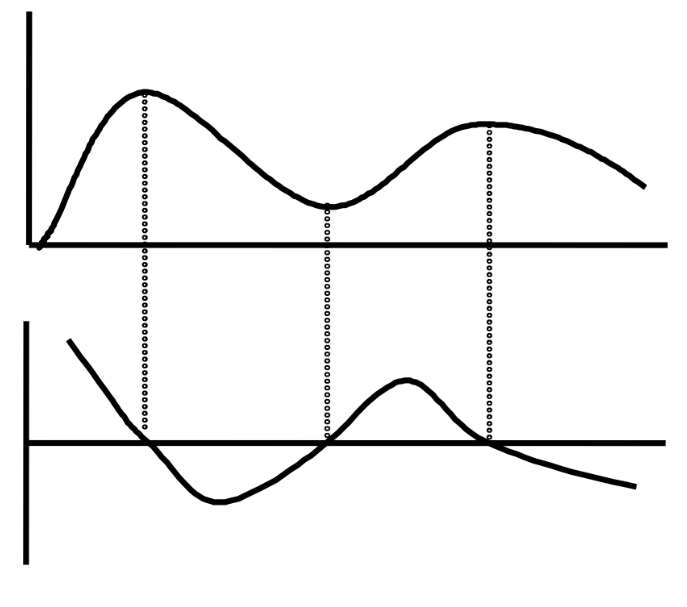
“backwards” / away from finish line / negative velocity
in the top graph, negative slopes indicate moving __________
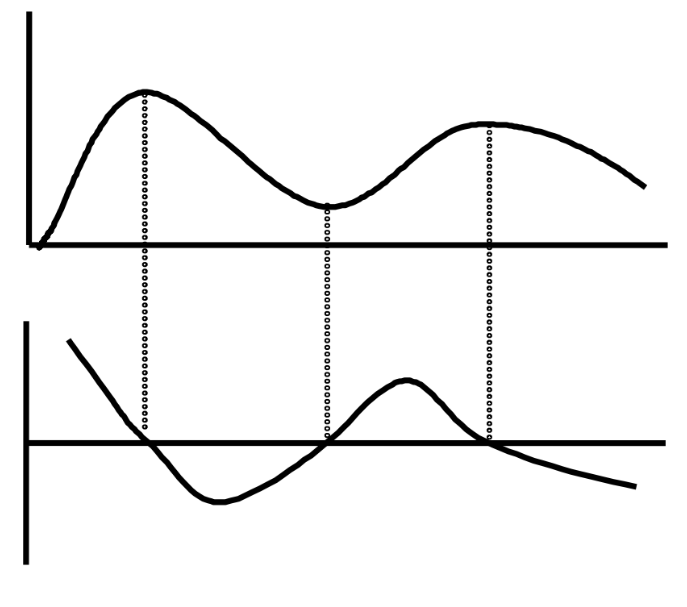
positive
in the bottom graph, when the line is above the horizontal axis the velocity is _________
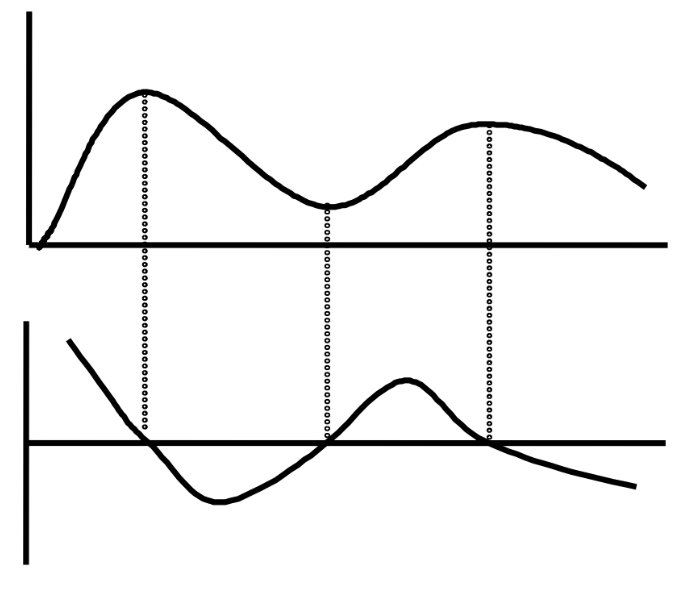
negative
in the bottom graph, when the line is below the horizontal axis the velocity is _________
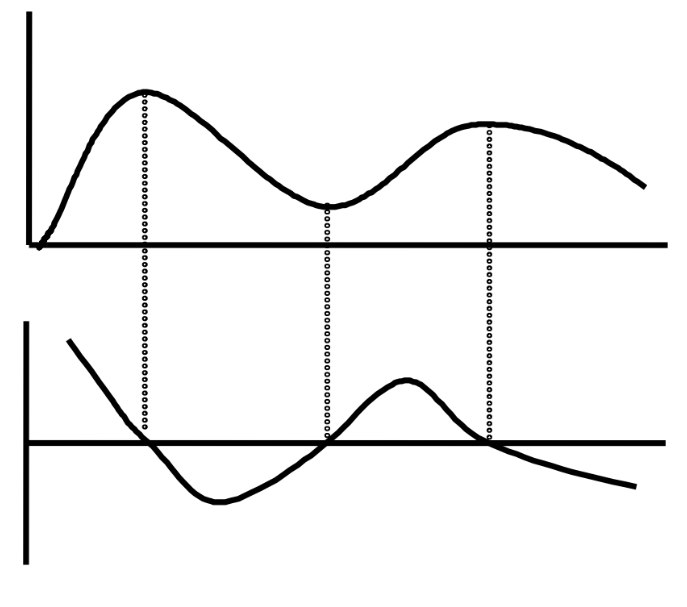
comparison
angle angle diagrams are good plots for _________ between sides or pathologies
F; NO TIME/TEMPORAL DATA
T/F: angle angle diagram data includes information about the timing of movements
there is nothing in this deck about computing relative angles (go look at the slides)
there is nothing in this deck about computing relative angles